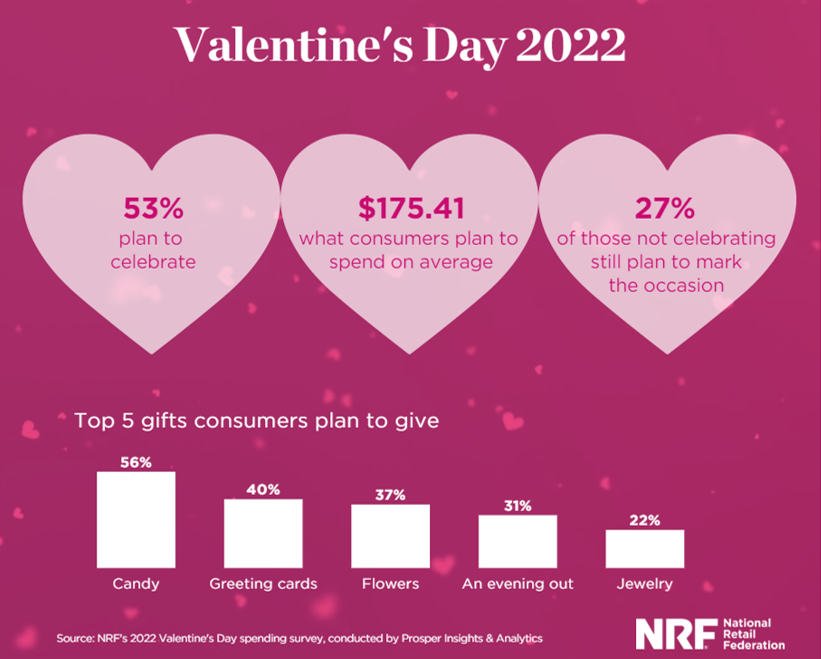Although mostly associated with romantic relationships, friends, and family, Valentine’s day is an unmissable opportunity to show some love to your customers and turn the outcome into conversions.
What does Valentine’s day look like in 2023?
Valentine’s day spending (U.S.) has increased by $6.3B in the past ten years, starting at $17.6B in 2012 and reaching $23.9B in 2022. Not to mention the record-breaking 2020 when it hit $27.4B!

However, due to an unfortunate global pandemic, it saw a significant drop in 2021, which was likely influenced by nationwide quarantines and social distancing. Fast forward to today, and it seems that everything is getting back on track.
Here are some numbers to prove it (2022):
- 2022 was the second-highest year on record regarding Valentine’s day spending ($23.9B)
- More than half (53%) of U.S. consumers plan to celebrate Valentine’s day.
- Shoppers expect to spend an average of $175.41 per person on Valentine’s Day gifts.
- U.S. consumers spent $5.8B on jewelry alone.
- Online continues to be the most popular shopping destination (41% of consumers shop online compared to 32% of consumers who shop at department stores).
- 27% of those who do not celebrate still tend to mark the occasion.
What sells most on Valentine’s day?
If you’re in one of these industries, you can’t miss out on Valentine’s day campaigns.
The most popular Valentine’s gifts don’t change much each year, and the list usually goes as follows (NRF):
- Candies – 56%
- Greeting cards – 40%
- Flowers – 37%
- Evening out – 31%
- Jewelry – 22%


